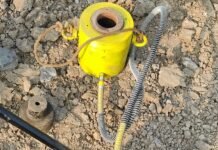In the past, mostly the worker’s health was considered in relation to their work and working conditions in industrial places like factories, mines, workshops, etc., hence the terms industrial safety and health and industrial hygiene were developed and used. But gradually the concept of health and safety at work was developed and workers’ health at any work-place or occupation, not limited to industry, was considered in USA (Occupational Safety and Health Act, 1970) and UK (Health & Safety at Work Act, 1974) and now, therefore, the modern concept is to use the term Occupational Health and Safety covering industrial and non-industrial Occupation health hazards, their effects, controls and preventive measures.
The range of occupational health was also originally limited to occupational diseases or injuries concerned with the work, working condition or the working environment. But with the research in bacteriology at the end of 19th century, it was accepted that a disease may arise due to combination of many factors and the definition of occupational health was widened in 1950 at the Joint ILO/WHO Committee meeting, to consider promotion, maintenance and protection of health from all factors adverse to health.
Normally workers’ health is influenced by non-occupational and occupational factors which can be sub-classified as under:

The occupational health is studied by various specialized branches considering different health hazards as under:
| Faculty or Approach | Factors or Hazards |
| Occupational Physiology | Heavy work, heat stress, fatigue etc. |
| Occupational Psychology | Mental factors like job satisfaction, motivation, attitude, interest etc. |
| Ergonomics | To make the work suitable to a man considering his anatomy, physiology and psychology. |
| Occupational Pathology or Medicine | Diseases due to exposure to skin, nose, and mouth and due to physical factors like noise, vibration, radiation, heat, light etc. |
| Occupational Hygiene (Engineering) | Measurement and assessment of physical and chemical factors like noise, vibration, light, ventilation, temperature, gas, dust, fume etc., and suggesting engineering and medical controls. |
| Occupational Safety | Accident prevention considering mechanical, chemical, physical and human factors. |
| Occupational Psychiatry | Mental deviation or nervous disease due to physical or mental work environment or human relations at work. |
| Occupational Sociology | Attitudes or behaviors at work, working conditions, management etc. |
Contents
Adverse Health Effects and Controls:
A short synopsis of the above hazards, their adverse effects and control measures are given below.
Heat & Cold:
Heat causes burns, exhaustion, stroke, cramps, fatigue, decreased efficiency, pain, discomfort, heal collapse, systemic disorders, skin disorders, psychoneurotic disorders and a tendency to cause the accident. Acclimatization to high temperature requires a reduction in heart rate and internal body temperature at the expense of increased sweating. Radiant heat (e.g. ovens, furnaces), stagnant heat (e.g. textile mills), and high temperature (e.g. mines, glass furnaces) create stress and impair health.
Click here for ? Heat Stroke treatment
The amendment (1995) in Gujarat Factories Rules has prescribed certain limits – Room temperature < 30 °C (80 °F), Air movement > 30 mt/ min. Ventilation openings > 15% of the floor area and in summer when the temperature exceeds 35 °C and humidity 50%, air cooling is required. For humidity control, dry and wet bulb temperatures are also prescribed u/r ISA.
One UK Standard suggests the following criteria:
| Environmental Factor | Standard |
| Air temperature | 21 oC |
| Mean radiant temperature | > 21oC |
| Relative humidity | 30-70% |
| Air movement | 30-60 mt / min |
| Temperature gradient (foot to head) | < 2.5 oC |
The cold causes chilblains, shivering, frostbite, trench foot, vasoconstriction, hypothermia and erythrocyanosis.
The control measures include (1) sufficient intake of water and salt (2) cotton and protective clothing (3) break in exposure time and more rest intervals (4) engineering controls (5) medical control and (6) acclimatization of the workers.
Air Pressure:
Abnormal air pressure can cause decompression sickness known as ‘Bends’ (dull throbbing pain in joints or deep in muscles and bones) and ‘chokes’ (subtemal distress and difficulty in deep inspiration with coughing).
Light & Colour:
Improper and insufficient illumination causes eye strain, eye fatigue, headache, lachrymation, congestion around cornea and miner’s nystagmus (chronic effect). Glare or excessive brightness causes visual discomfort and fatigue, tiredness and irritability. There should be sufficient and suitable lighting natural or artificial in all work areas.
Noise & Vibration:
Noise – too low or too high cause ear strain or pain. Auditory effects are a temporary or permanent hearing loss. Non-auditory effects cause nervousness, fatigue, difficulty in conversation, decreased efficiency, annoyance and psychological and systemic effects. The degree of injury depends on intensity and frequency of noise, exposure time (duration) and individual susceptibility.
The vibration of 10 to 500 Hz frequency range as normally found with pneumatic drills, hammers and grinders affect the hands and arms. After exposure to months or years, fingers become sensitive to spasm known as white fingers. Vibrations also produce injuries to joints, elbows and shoulders.
Sick or Tight Building Syndrome is a health effect on workers, mostly IT personnel due to heat or cold stress, poor ventilation, poor lighting, or monotonous work in the fixed type of environment for a longer period. Sickness has resulted in health effects like indigestion, psychosis (mental fatigue), visual problem, the mental feeling of impotency, headache, backache, uneasiness, obesity, acidity etc. Remedial measures include-change in the working environment, new and attractive atmosphere, good lighting and ventilation, good housekeeping, rotation of persons, recreation facility and staggered working hours instead of continuous eight or more working hours.






Nice efforts….appreciate
Thanks